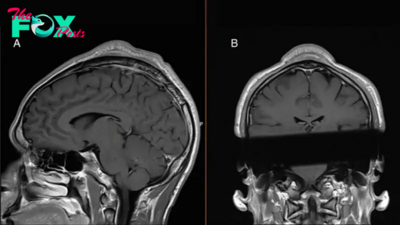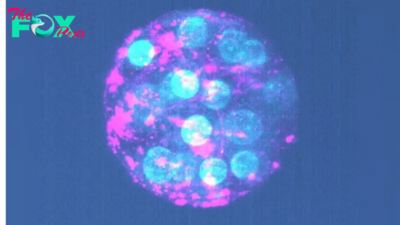Health
'This is what drives the migraine headache': Scientists uncover 'missing link' in why some migraines happen
For years, scientists have wondered how migraines can trigger auras — short-lived neurological symptoms that arise before or during migraines. Now, a newly discovered way in which the brain talks to peripheral nerves may be the answer, a mouse study suggests.
More than 1 billion people each year will have a migraine, and about one-quarter of those migraines will be accompanied by an aura. These sensory symptoms can include seeing lights and hearing sounds that aren't there or feeling tingling or numbness.
Scientists have known that these auras are associated with "cortical spreading depression," waves of abnormal activity that wash over the brain and temporarily inactivate certain neurons. The waves are thought to somehow trip pain-detecting nerves outside the brain, in part by releasing chemicals into the cerebrospinal fluid (CSF), a substance that surrounds and cushions the organ.
Exactly how the chemicals reached the nerves was a mystery. Now, scientists have uncovered a route by which some molecules can escape the brain's protective barrier.
Related: Migraines and blood sugar issues share common genetic risk factors
In a study published Thursday (July 4) in the journal Science, researchers examined the route CSF takes to exit the brain by zooming in on a cluster of neurons called the trigeminal ganglion. This bundle of cells transmits signals from the nerves of the face and jaw to the brain, plugging in around the brainstem.
The scientists discovered that this nerve bundle also provides a route for CSF and the molecules within it to reach the world beyond the brain.
-

 Health3h ago
Health3h agoThe Surprising Benefits of Talking Out Loud to Yourself
-

 Health5h ago
Health5h agoDoctor’s bills often come with sticker shock for patients − but health insurance could be reinvented to provide costs upfront
-

 Health11h ago
Health11h agoHow Colorado is trying to make the High Line Canal a place for everyone — not just the wealthy
-

 Health20h ago
Health20h agoWhat an HPV Diagnosis Really Means
-

 Health1d ago
Health1d agoThere’s an E. Coli Outbreak in Organic Carrots
-

 Health1d ago
Health1d agoCOVID-19’s Surprising Effect on Cancer
-

 Health2d ago
Health2d agoColorado’s pioneering psychedelic program gets final tweaks as state plans to launch next year
-

 Health2d ago
Health2d agoWhat to Know About How Lupus Affects Weight


























